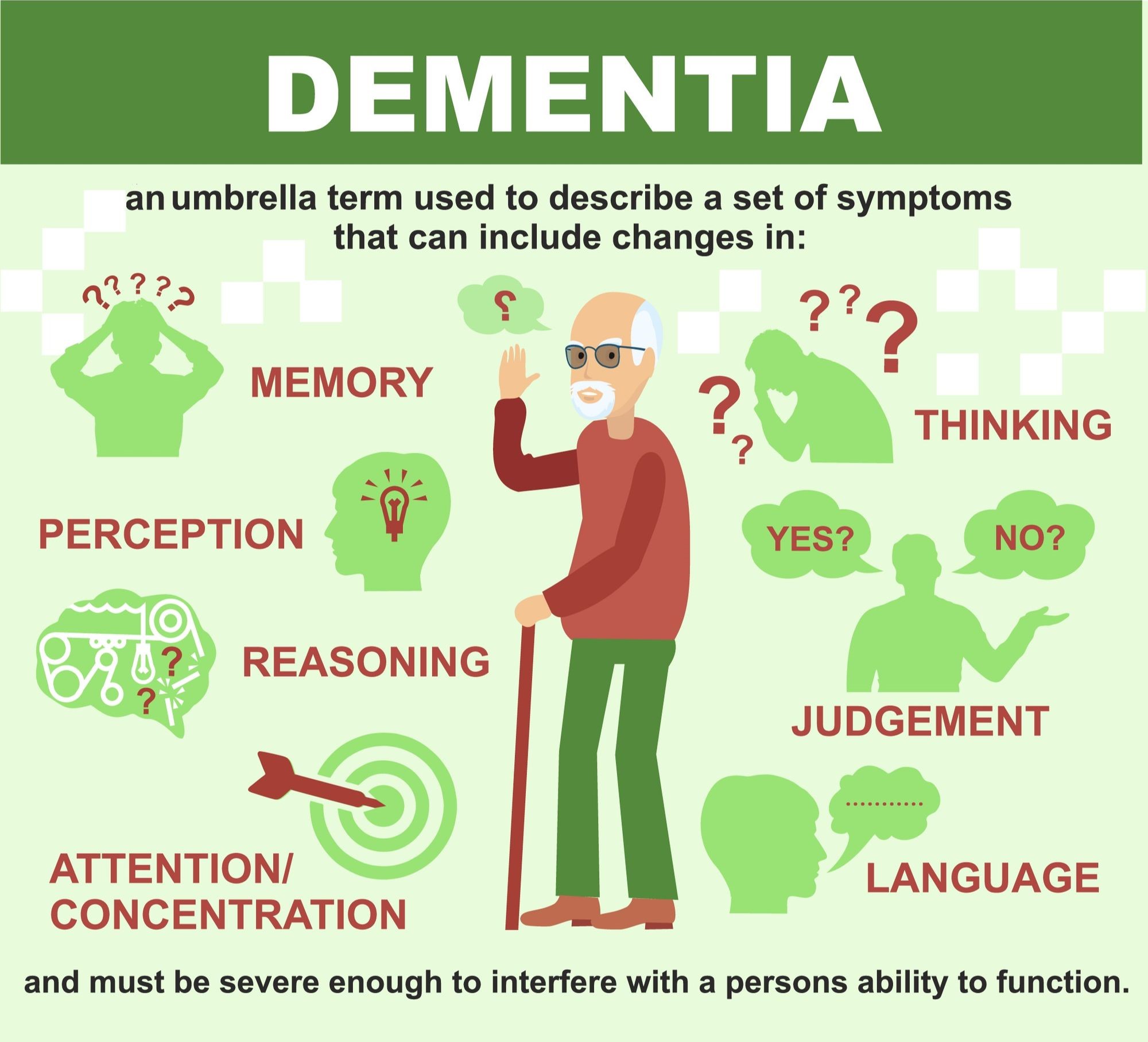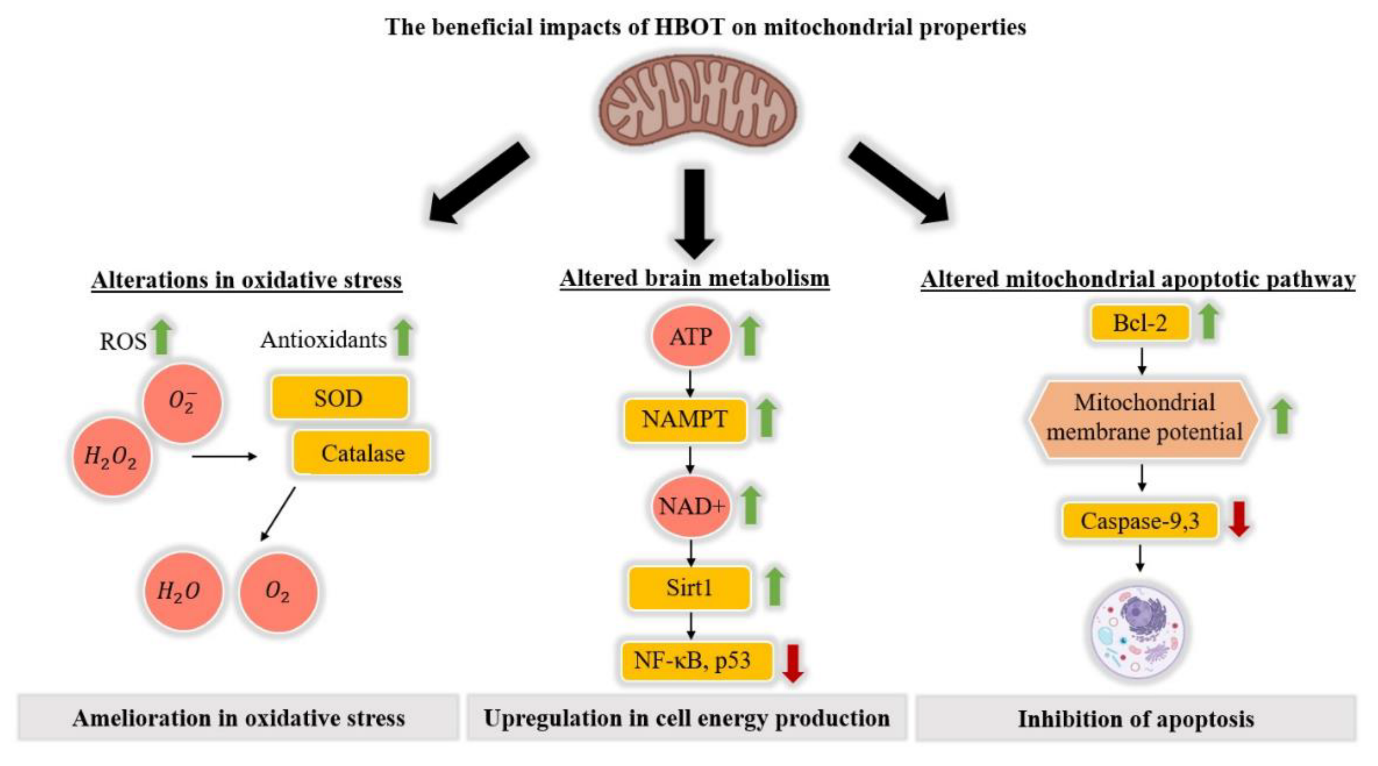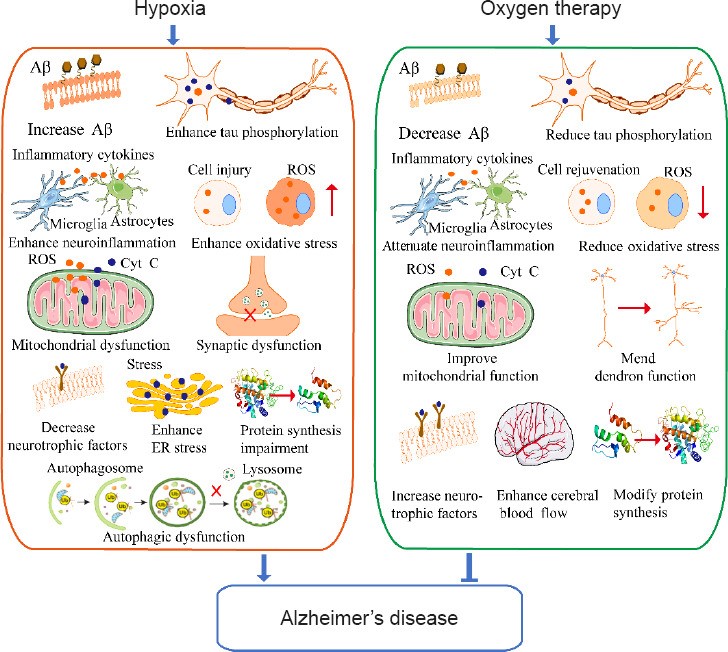Role of Hyperbaric Oxygen Therapy in Dementia
What is Dementia?
A condition (a collection of related symptoms) known as dementia is linked to a steady deterioration in brain function. Dementia comes in a wide variety of forms and has numerous causes. The distinction between dementia and Alzheimer’s disease is frequently unclear to people. Dementia is a type, and Alzheimer’s disease and vascular dementia account for the bulk of instances. Your daily life and activities are hampered by your declining mental capacity. The mental degeneration could be slowed down by current drugs. Alzheimer’s disease (AD), which today affects over five million people and is expected to affect 13.8 million by the year 2050, is the most frequent cause of dementia. The fifth most common cause of mortality for people over 65 and the sixth most common overall is AD.

An estimated 5.0 million persons over the age of 65 had dementia in 2014, and that number is expected to rise to approximately 14 million by the year 2060 [1].

Symptoms of Dementia
Some signs of dementia include issues with:
- Lack of memory thinking speed
- Mental agility and acuity
- Language, such as using the wrong words
- Having issues speaking, understanding, judging, feeling, or moving
- Difficulties performing daily activities
- Frequently forgetting recent events, names, and faces
- Asking the same questions over and over
- Having trouble organizing and planning chores.
Causes of Dementia
Your brain’s deterioration leads to dementia. The nerve cells in your brain are harmed by dementia, which makes it impossible for your brain to interact with the other parts of your body. Another cause of dementia is obstructed blood flow to the brain, which deprives it of oxygen and nutrients. Brain tissue perishes without nourishment and oxygen. Depending on the part of your brain that is damaged, you may experience a variety of symptoms. Some forms of dementia are incurable and get worse with time. Other types of dementia are brought on by other illnesses that can have an impact on your brain [2].
Types
Three categories of dementia exist:
1. Primary diseases and conditions in which dementia is the major illness.
2. Secondary dementia due to another disease or condition. Symptoms of dementia are reversible and brought on by other conditions or factors.
Primary Dementia
Types of primary dementia include:
Alzheimer’s disease: The most prevalent kind of dementia is Alzheimer’s. Tau and amyloid proteins accumulate abnormally in the brain. These proteins prevent your brain’s nerve cells from communicating with one another. Nerve cells pass away, starting in one place and dispersing as more pass away in other places. Short-term memory loss, confusion, and changes in personality and behaviour are among the symptoms.
Vascular dementia: The second most prevalent form of dementia is vascular dementia. It is brought on by diseases that obstruct and harm the blood vessels in your brains, such as atherosclerosis or strokes. Memory issues, confusion, and difficulty focusing and finishing tasks are symptoms.
Lewy body dementia: Lewy body dementia is characterized by the accumulation of protein clumps, or “Lewy bodies,” in the nerve cells of the brain. Nerve cells are harmed by Lewy bodies.
Frontotemporal dementia (FTD): Frontotemporal dementia (FTD) is a dementia that develops when the frontal & temporal lobes of the brain are harmed. The accumulation of aberrant proteins in these regions is what causes harm.
Mixed dementia: Dementia that combines two or more different forms is called mixed dementia. The most typical combination is vascular dementia and Alzheimer’s disease. Most adults 80 years of age and older are affected by it. The symptoms of one dementia type may be more pronounced than others, and/or many of the symptoms of each kind overlap, making diagnosis difficult [3].
3. Dementia due to Other Diseases and Conditions
Huntington’s disease: It is brought on by a single faulty gene. The condition results in a breakdown of the nerve cells in your brain, which affects your ability to think, make decisions, and remember things. It can also cause personality changes.
Parkinson’s disease: Dementia is a common complication of Parkinson’s disease in its later stages. Problems with thinking and memory, hallucinations and delusions, depression, and speech difficulties are all symptoms of schizophrenia.
Creutzfeldt-Jakob disease: Only one in a million persons worldwide suffer from the rare infectious brain disease known as Creutzfeldt-Jakob disease. The disease is brought on by prions, an aberrant protein found in the brain. In your brain, these prions group and kill nerve cells.
Wernicke-Korsakoff syndrome: A severe thiamine (vitamin B1) shortage is the root cause of this brain condition. This may cause bleeding in important memory-related brain regions. It is most frequently brought on by alcohol use disorder, although it can also be brought on by chronic infection and starvation.
Traumatic brain injury: Repeated hits to the head might result in traumatic brain damage. Football players, boxers, soldiers, and victims of auto accidents are the most common groups to experience it. Memory loss, mood or behaviour changes, slurred speech, and headaches are among dementia symptoms that manifest years after the disease has begun.
Dementia due to Other Causes
Normal pressure hydrocephalus (NPH), vitamin deficiencies (B1, B6, B12, E, and cooper), infections like HIV, syphilis, and Lyme disease, brain tumors, metabolic and endocrine disorders like Addison disease, hypoglycemia, hyperglycemia, liver cirrhosis, are some conditions that can cause dementia-like symptoms that can be treated [4].
Hyperbaric Oxygen as Effective Medicine for Dementia
By administering pure oxygen under high pressure, hyperbaric oxygen treatment (HBOT) increases the amount of oxygen in the blood and tissues (hyperoxia) (about 2-3 atmospheres). One method of treatment involves being exposed to pure oxygen (O2) concentrations at high atmospheric pressures, or hyperbaric oxygen therapy (HBOT). According to the Undersea & Hyperbaric Medical Society, this pressure may be greater than or equivalent to 1.4 atmospheres (atm) (UHMS). For all current UHMS-approved uses, patients may only inhale oxygen when restrained in a space with a minimum air pressure of 2 ATA. For hyperbaric medicine to work, there needs to be a pressure environment that is greater than the air pressure at sea level. A 100% oxygen supply system and pressure chamber—which may be flexible or rigid—are required for hyperbaric oxygen therapy. Trained professionals keep an eye on the patient and follow a predetermined plan, adjusting as needed [5].

Success of HBOT in MiceModel and Human
Vascular dysfunction has a role in decreasing cerebral blood flow (CBF), which leads to hypoxia, as well as ageing and the pathogenesis of Alzheimer’s disease (AD). For a variety of medical disorders, hyperbaric oxygen treatment (HBOT) is currently used in clinical settings. In the current investigation, researchers subjected 5XFAD mice, a well-researched AD model that exhibits reduced cognitive capacities, to HBOT. They examined the therapeutic effects of utilising two-photon live animal imaging, behavioural tests, biochemical analysis, and histological examination. HBOT enhanced CBF and increased arteriolar luminal diameter, which alleviated hypoxia. HBOT also decreased the amount of pre-existing plaques and attenuated the growth of new ones, which reduced the amyloid load. This was connected to modifications in the processing of amyloid precursor proteins, increased Aß protein degradation and clearance, and enhanced 5XFAD mouse behaviour. They subjected 6-month-old 5XFAD and wild type (wt) mice to HBOT at 2 ATA for 60 minutes per day, 5 days per week, for 4 weeks using a specially built HBO chamber (i.e., 20 treatments). The effects of HBOT are partially mediated by a long-lasting structural alteration in blood arteries that decreases brain hypoxia. They administered HBOT to elderly patients who had considerable memory loss at baseline and noticed an increase in CBF and an improvement in cognitive abilities. This study demonstrates HBOT’s effectiveness in neurological diseases linked to hypoxia, especially in AD and ageing. HBOT enhances levels of A degradation and clearance while decreasing the aberrant processing of amyloid precursor protein [6].
In a mouse model of Alzheimer’s disease, a study demonstrated that hyperbaric oxygen therapy (HBOT), a form of treatment in which patients are administered pure oxygen, inhibited the biochemical processes that lead to the development of the disease.
A group of elderly individuals with memory loss also benefited from this oxygen therapy, which increased blood flow to the brain and enhanced general cognitive functioning and memory, according to the study. The scientists employed two-photon microscopy imaging, which enables the imaging of living tissue, to evaluate the effects of HBOT in vivo, or in a living organism. In this case, HBOT was observed to inhibit the development of brand-new According to reports, environmental variables including hypoxia may have a role in the aetiology of Alzheimer’s disease (AD). A different form of treatment for AD and amnestic moderate cognitive impairment could be hyperbaric oxygen therapy, which increases tissue oxygen supply and reduces brain hypoxia (aMCI). In this study, researchers included 42 AD, 11 aMCI, and 30 control AD patients. All 42 AD patients underwent one round of hyperbaric oxygen therapy once daily for 20 days, along with 11 aMCI individuals. Each treatment consisted of a 20-minute pure oxygen inhalation (O2 = 99.9%, oxygen supply pressure 0.4 to 0.7 MPa, oxygen flow 10 to 15 L/h), a 15-minute break, and a second 20-minute pure oxygen inhalation (O2 = 99.9%, oxygen supply pressure 0.4 to 0.7 MPa, oxygen flow 10 to 15 L/h) under the pressure of 0.22 MPa (0.12 MPa on pressure gauge) in hyperbaric oxygen. They suggest that hyperbaric oxygen therapy may be a potentially effective alternative treatment for AD and aMCI based on past research and our most recent findings [8].
plaques and decrease the size of pre-existing plaques [7].

References
1. Alzheimer’s Disease International. World Alzheimer Report 2015: the Global Impact of Dementia. An Analyses of Prevalence, incidence, Cost and Trends. https://www.alz.co.uk/research/WorldAlzheimerReport2015.pdf. Accessed March 20, 2018.
2. GBD 2015 Mortality and Causes of Death Collaborators. Global, regional, and national life expectancy, all-cause mortality, and cause-specific mortality for 249 causes of death, 1980–2015: a systematic analysis for the Global Burden of Disease Study 2015. Lancet. 2016. October 8;388(10053):1459–1544. Doi: 10.1016/S0140-6736(16)31012-1.
3. McKhann GM, Knopman DS, Chertkow H, et al. The diagnosis of dementia due to Alzheimer’s disease: Recommendations from the National Institute on Aging-Alzheimer’s Association workgroups on diagnostic guidelines for Alzheimer’s disease. Alzheimers Dement. 2011. May;7(3):263–269. Doi: 10.1016/j.jalz.2011.03.005. Epub 2011 Apr 21.
4. Rajan KB, Wilson RS, Weuve J, Barnes LL, Evans DA. Cognitive impairment 18 years before clinical diagnosis of Alzheimer disease dementia. Neurology. 2015. September 8;85(10):898–904. Doi: 10.1212/WNL.0000000000001774. Epub 2015 Jun 24.
5. Adelman RD, Tmanova LL, Delgado D, Dion S, Lachs MS. Caregiver burden: a clinical review. JAMA. 2014. March 12;311(10):1052–1060. Doi: 10.1001/jama.2014.304.
6. Shapira, Ronit, et al. “Hyperbaric oxygen therapy alleviates vascular dysfunction and amyloid burden in an Alzheimer’s disease mouse model and in elderly patients.” Aging (Albany NY) 13.17 (2021): 20935.
Link: https://www.aging-us.com/article/203485/text
7. Le, Weidong. “Hyperbaric oxygen ameliorates cognitive impairment in patients with Alzheimer’s disease and amnestic mild cognitive impairment: Human neuropathology/novel methods.” Alzheimer’s & Dementia 16 (2020): e042867.
Link: https://www.ncbi.nlm.nih.gov/pmc/articles/PMC7293997/
8. Shytle RD, Eve DJ, Kim SH, Spiegel A, Sanberg PR, Borlongan CV. Retrospective case series of traumatic brain injury and post-traumatic stress disorder treated with hyperbaric oxygen therapy. Cell Transplant. 2019; 28:885–892.

